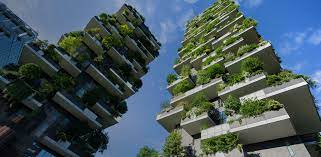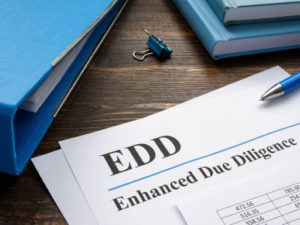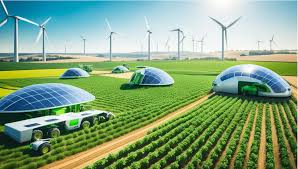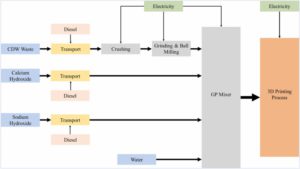In recent years, there has been a growing recognition of the need to integrate sustainability into building development. Sustainable building practices aim to minimise the environmental impact of construction projects while promoting energy efficiency, resource conservation, and occupant well-being. This blog explores the importance of sustainability in building development and provides insights into how stakeholders can effectively incorporate sustainable practices into their projects.
Benefits of Integrating Sustainability in Building Development
Sustainable building development refers to the design, construction, and operation of buildings that minimise negative environmental impacts while creating healthy and productive spaces for occupants. It involves adopting practices that reduce energy consumption, conserve water, minimise waste generation, and promote the use of eco-friendly materials.
- Environmental Benefits
Integrating sustainability in building development helps reduce greenhouse gas emissions, conserve natural resources, and protect ecosystems. Energy-efficient buildings contribute to a lower carbon footprint and promote a cleaner environment.
- Economic Benefits
Sustainable building practices can lead to long-term cost savings through reduced energy and water consumption. Additionally, green buildings often have higher market value and tenant retention rates, offering financial benefits to developers and owners.
- Social Benefits
Sustainable buildings prioritise occupant health and well-being. Enhanced indoor environmental quality, ample natural light, and improved thermal comfort positively impact occupants’ productivity, health, and overall satisfaction.
Key Principles of Sustainable Building Development
To effectively integrate sustainability into building development, several key principles should be considered:
- Energy Efficiency and Renewable Energy
Incorporating energy-efficient design strategies, utilising renewable energy sources like solar and wind power, and optimising building envelope performance can significantly reduce energy consumption and reliance on fossil fuels.
- Water Conservation and Management
Implementing water-efficient fixtures, rainwater harvesting systems, and greywater recycling can minimise water consumption and preserve this precious resource.
- Use of Sustainable Materials
Opting for environmentally friendly materials with a low carbon footprint, such as recycled or locally sourced materials, can reduce embodied energy and waste generation during construction.
- Waste Reduction and Recycling
Implementing waste management strategies, such as recycling construction waste and designing for material reuse, promotes a circular economy approach and minimises landfill contributions.
- Indoor Environmental Quality
Prioritising good indoor air quality, adequate ventilation, and incorporating natural elements in building design fosters healthier and more comfortable indoor environments for occupants.
Sustainable Building Certifications and Standards
Various certifications and standards provide frameworks for assessing and recognising sustainable building practices. Some widely recognised certifications include:
- LEED (Leadership in Energy and Environmental Design)
Developed by the U.S. Green Building Council (USGBC), LEED is a globally recognised certification system that evaluates the environmental performance of buildings across different categories, such as energy efficiency, water conservation, and materials selection.
- BREEAM (Building Research Establishment Environmental Assessment Method)
BREEAM is a widely used certification method developed in the United Kingdom. It assesses buildings based on their environmental impact, energy performance, and overall sustainability.
- WELL Building Standard
Focusing on occupant health and well-being, the WELL Building Standard evaluates building features and policies that support physical and mental well-being, such as air quality, lighting, and ergonomics.
Challenges and Barriers to Sustainable Building Development
Despite the numerous benefits of sustainable building development, several challenges and barriers exist:
- Cost Considerations
Integrating sustainability into building development can involve higher upfront costs, which may deter some developers. However, long-term savings and potential financial incentives can offset these initial investments.
- Lack of Awareness and Knowledge
Many stakeholders, including developers, architects, and contractors, may lack awareness and understanding of sustainable building practices and the associated benefits. Education and training initiatives can help bridge this knowledge gap.
- Resistance to Change
Traditional construction practices and resistance to change within the industry can hinder the adoption of sustainable building methods. Overcoming this resistance requires demonstrating the value and long-term benefits of sustainability.
Strategies for Integrating Sustainability
To successfully integrate sustainability in building development, several strategies can be employed:
- Energy-efficient design
Implementing energy-efficient design principles, such as optimising insulation, using high-performance windows, and incorporating natural ventilation, can significantly reduce energy consumption and promote sustainable practices.
- Use of sustainable materials
Choosing eco-friendly materials, such as recycled or locally sourced materials, reduces the environmental impact of construction. Materials with low volatile organic compounds (VOCs) also contribute to better indoor air quality.
- Water conservation
Implementing water-saving measures, such as rainwater harvesting systems, low-flow fixtures, and efficient irrigation systems, can minimise water consumption and support sustainable water management.
- Waste management
Proper waste management practices, including recycling and minimising construction waste, contribute to sustainability by reducing the amount of material sent to landfills and promoting a circular economy.
- Indoor environmental quality
Prioritising indoor environmental quality through measures like good ventilation, natural lighting, and low-emitting materials improves the comfort, health, and productivity of building occupants.
- Renewable energy sources
Integrating renewable energy sources, such as solar panels or wind turbines, helps reduce reliance on fossil fuels and promotes the use of clean, sustainable energy.
Embracing Sustainability in Construction Industry
The journey from blueprint to reality in integrating sustainability in building development is a critical step towards a more environmentally conscious future. By prioritising sustainable practices, we can create buildings that minimise their ecological footprint, enhance energy efficiency, and promote a healthier living environment. It is our responsibility to embrace these principles, collaborating with architects, engineers, and stakeholders to transform our vision into tangible sustainable structures. Through collective efforts, we can pave the way for a greener, more sustainable world.









Be First to Comment